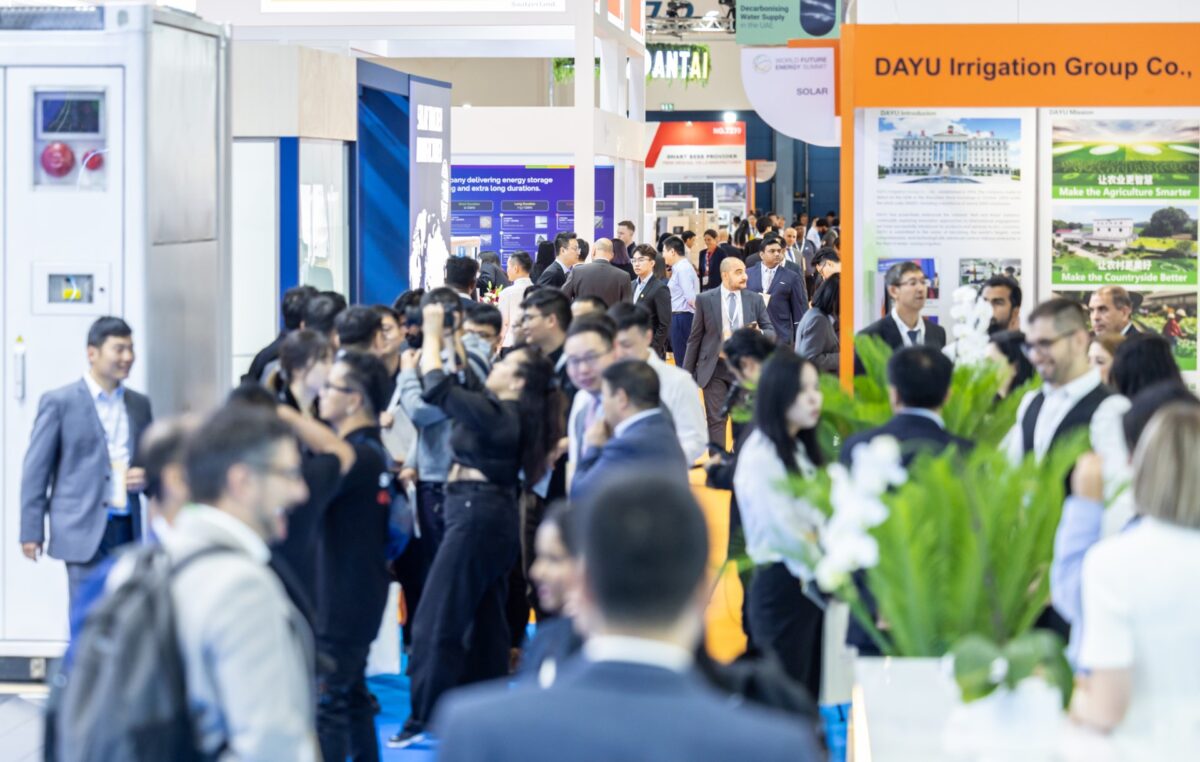The World Future Energy Summit (WFES) in Abu Dhabi kicked off slowly this year as the United Arab Emirates grappled with the region's worst storm in 75 years, as well as widespread flooding.
The natural disaster prevented several visitors from attending the fair, but also led to the cancellation of the Intersolar event, which was to be held concurrently in Dubai. As a result, there was an uptick in the number of visitors starting from the second day, and this crowd likely included many people who had only planned to attend the Intersolar event.
The WFES organizers said that approximately 16,000 people attended the fair and around 41% of them came from outside the United Arab Emirates. About 450 companies had a presence at the show, which is 22% higher than in 2023. The gross floor space also increased this year by 12% to 35,000 m2.
Auctions are still the biggest market driver, with low bids even during periods of high PV module prices. Now, with panel prices hitting new all-time lows, the results could be surprising.
Lei Wu, the COO of Sungrow Middle East, said the WFES offers a good opportunity to meet customers from across the Middle East and North Africa (MENA) region.
“Our main customers from this region are mostly in the UAE and Saudi Arabia,” he told pv magazine. “Both markets are offering great opportunities in the large scale and C&I business. We still don't see big demand in the residential segment.”
Popular content
Mohamed Saady, head of technical services and product management MENA at JinkoSolar, was particularly happy with the increase in visitors.
“We consider the WFES as our gateway to MENA because it is the biggest and most important event in the region,” he said to pv magazine. “We are seeing a solid C&I market coming in many MENA countries that apply either net metering or net billing. In this regard, the UAE and Jordan are well-established markets, and now we see new markets like Kuwait, Morocco and Algeria take their first important steps.”
Saady said that JinkoSolar, based on China's export statistics, has a market share in the MENA region ranging from 50% to 70%, and as high as 80% in unspecified countries.
According to Hinde Liepmannsohn, executive director of the Middle East Solar Energy Industry Association (MESIA), the WFES trade show highlighted a number of growing trends across all markets.
“The C&I business is currently attracting capital,” she told pv magazine. “There is still a strong need for regulations. We see Oman, Bahrain, Kuwait and Iraq as potential new emerging markets.”
Abhishek Kaushal, sales and marketing director South Asia for Huasun, told pv magazine that the crowd was really good.
“We see big attention here for heterojunction solar modules, considering most of the projects are located in high-temperature areas,” said Kaushal. “The clients understand now the commercial maturity of heterojunction technology.”
This content is protected by copyright and may not be reused. If you want to cooperate with us and would like to reuse some of our content, please contact: editors@pv-magazine.com.



2 comments
By submitting this form you agree to pv magazine using your data for the purposes of publishing your comment.
Your personal data will only be disclosed or otherwise transmitted to third parties for the purposes of spam filtering or if this is necessary for technical maintenance of the website. Any other transfer to third parties will not take place unless this is justified on the basis of applicable data protection regulations or if pv magazine is legally obliged to do so.
You may revoke this consent at any time with effect for the future, in which case your personal data will be deleted immediately. Otherwise, your data will be deleted if pv magazine has processed your request or the purpose of data storage is fulfilled.
Further information on data privacy can be found in our Data Protection Policy.